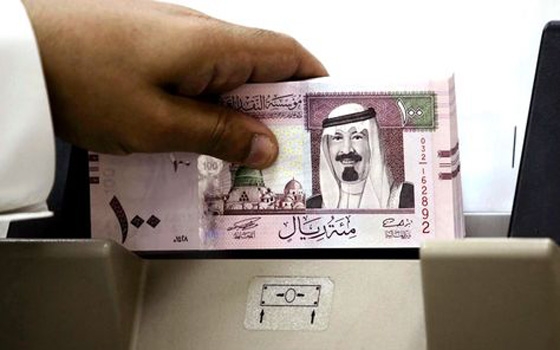Saudi banks continue to support the macroeconomic conditions by providing the necessary financing for local businesses. The depositary base reached an all-time high at SR 1.29 trillion, increasing 12.5 percent on an annual basis. The pace of growth has been stable and supportive of local banks' financing expansions, according to a report by the National Commercial Bank (NCB).
The majority of deposits are demand based with a share of 62.4 percent as they climbed 18.9 percent Y/Y during March. Businesses and individuals hold 92.5 percent of demand deposits while government entities make up the remaining 7.5 percent portion. However, government entities have recorded a staggering hike of 76.2 percent Y/Y to reach SR 60.3 billion, more than doubling the level reached by the end of 2011.
Bank wide time and savings deposits recorded the slowest growth rate over the past six months at 1.7 percent annually. Government entities added 12.5 percent to reach SR 140.0 billion, a figure which is likely to grow further over the coming months, while businesses and individuals withdrew 5.8 percent of their time and savings deposits. Additionally, other quasi-monetary deposits grew by 6.6 percent annually as foreign currency deposits increased by 5.1 percent Y/Y and outstanding remittances posted a record high by climbing 50.8 percent annually during the month of March.
The NCB report said combined loans portfolio for local banks reached an all-time high during March at SR 1.04 trillion, a 15.8 percent gain over March 2012. The pace of credit growth in the Saudi economy continues to soften by recording the third consecutive deceleration. The current rate of growth is far below the exceptional levels seen in 2004-2005 periods where annual growth reached near 40 percent or the 2007-2008 periods where rates reached as high as 34.9 percent Y/Y during August 2008.
Local banks' efforts to expand their maturity curve remains evident by the rise in medium and long term credit. Credit maturing within one year, short term credit, posted its slowest growth in eleven months at 5.6 percent Y/Y. Meanwhile, medium term credit added SR 40.9 billion over the past twelve months, a 26.7 percent increase on an annual basis. Furthermore, long-term credit, which mainly focuses on larger projects and corporations expanded by a substantial 32.6 percent annually to reach SR 291.7 billion by the end of the first quarter of 2013.
The credit portfolio of Saudi banks continues to be largely compromised of the commerce sector which holds 20.4 percent of banks' total financing, SR 212.5 billion. The commerce sector recorded a relatively modest growth at 12.2 percent Y/Y as other sectors gain momentum due to the efforts of the government to diversify the Saudi economy.
Additionally, the vast projects in mining and quarrying have been captured by local banks as the sector recorded the highest annual growth at 59.0 percent with projects such as Maaden and Alcoa's aluminum refinery worth SR 5.6 billion and Hanwha's gold processing plant worth SR 1 billion. The only sector to post a decline was the transport and communication which dropped by 14.4 percent as the Haramain railway project shifts beyond the financing phase. The healthy growth in lending this year and the stable pace of deposits has taken the loans to deposits ratio to 80.5 percent in March from 79.3 percent last December. The NCB report said credit is likely to maintain the current trajectory as banks are still below SAMA's (Saudi Arabian Monetary Agency's) limitations and the economy remains robust and absorbent of excess financing.
Arab News
16 May

























































